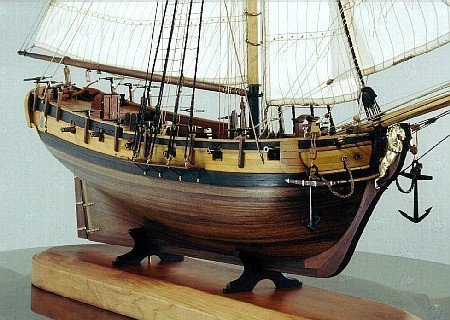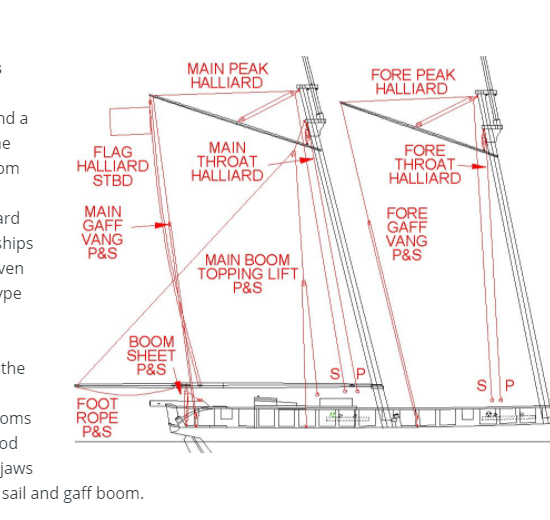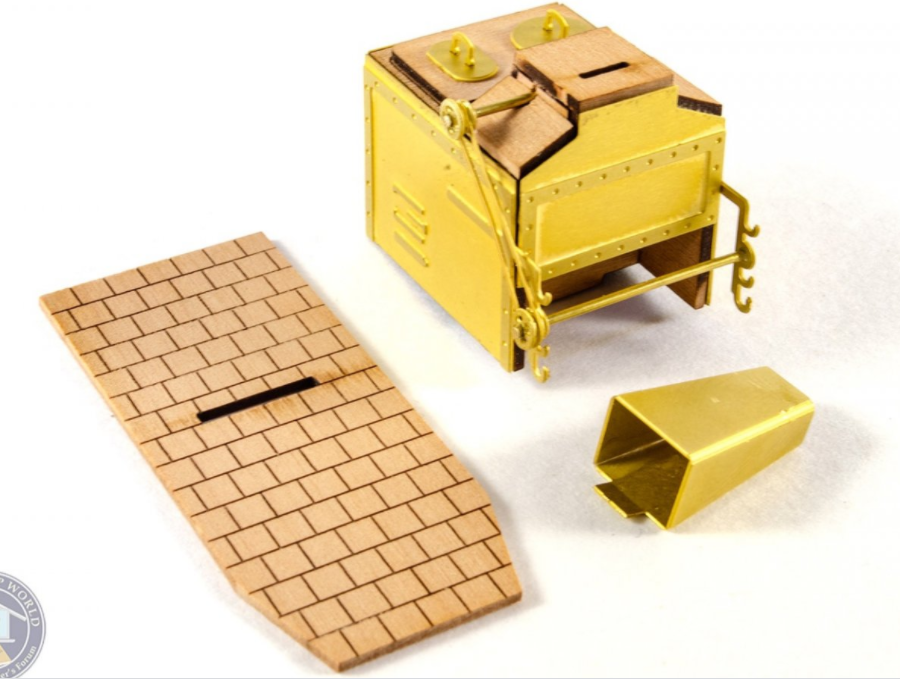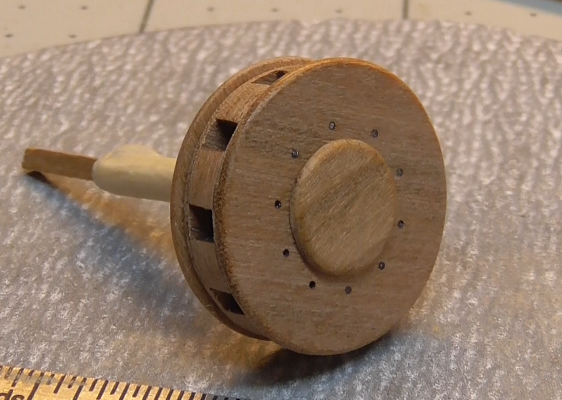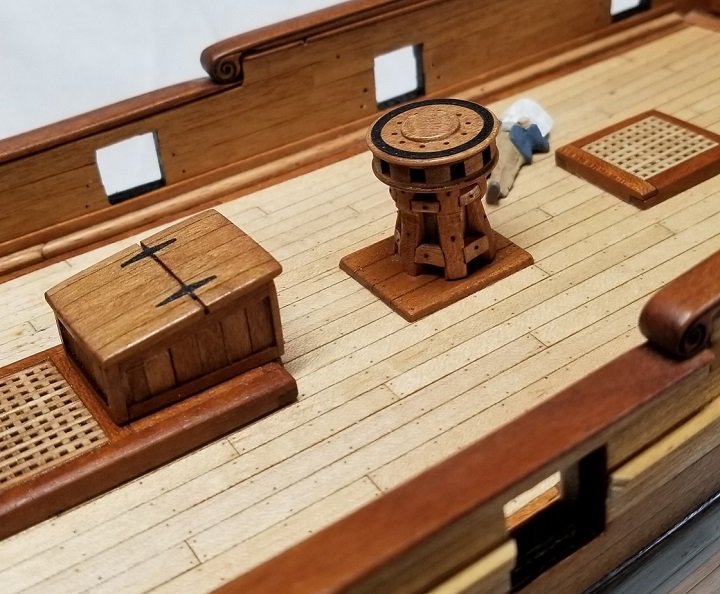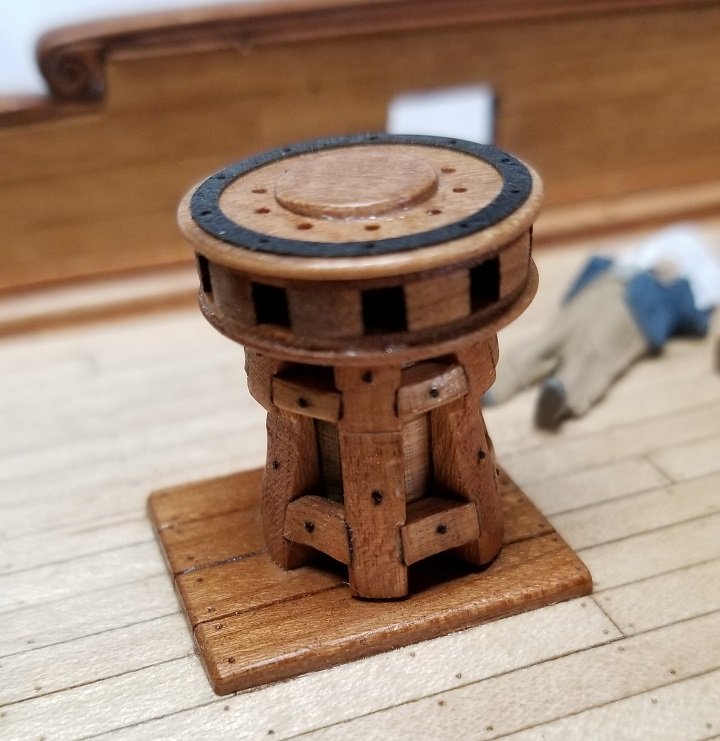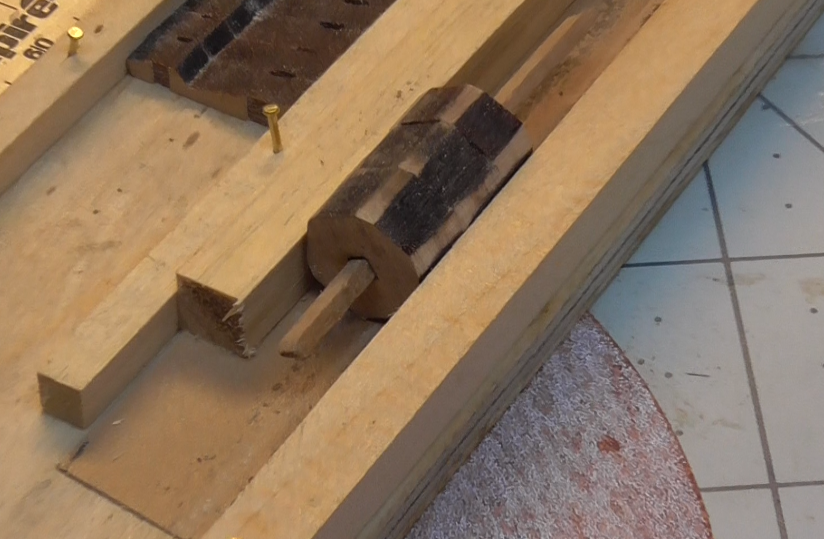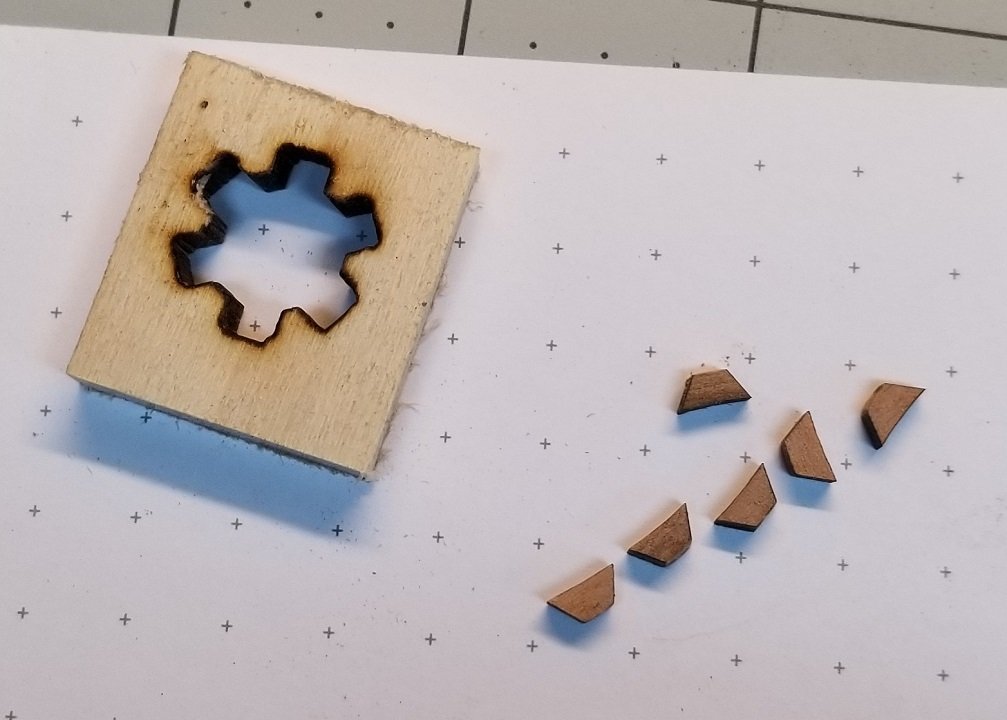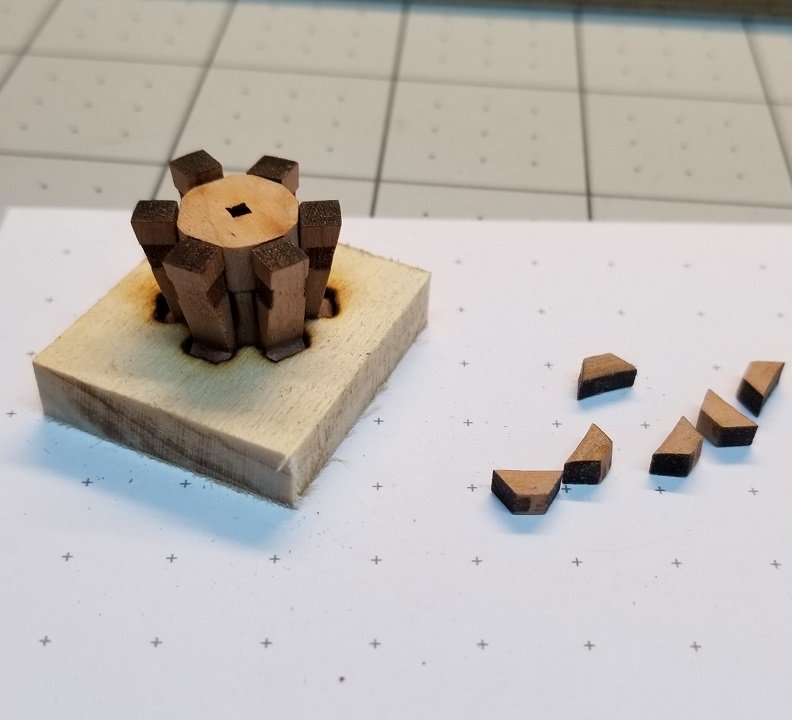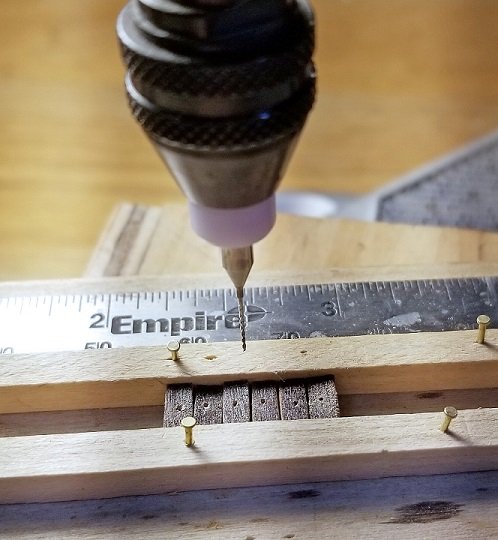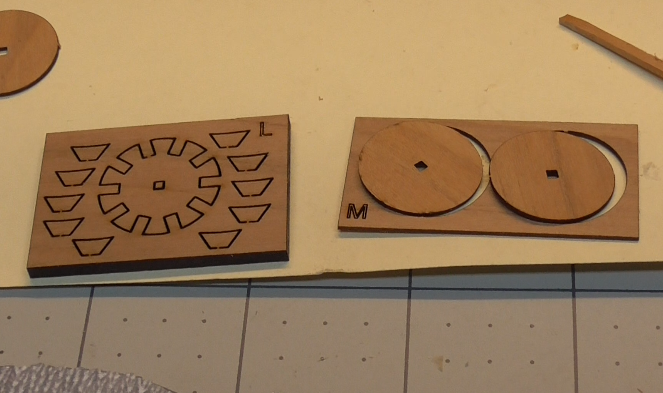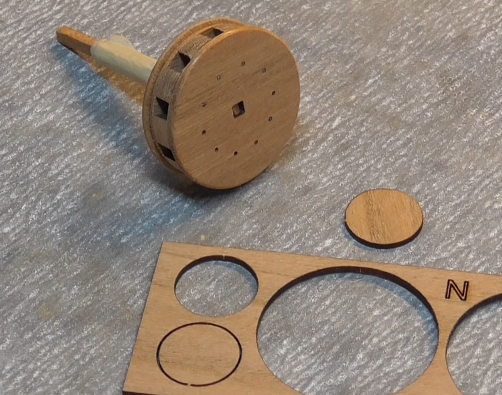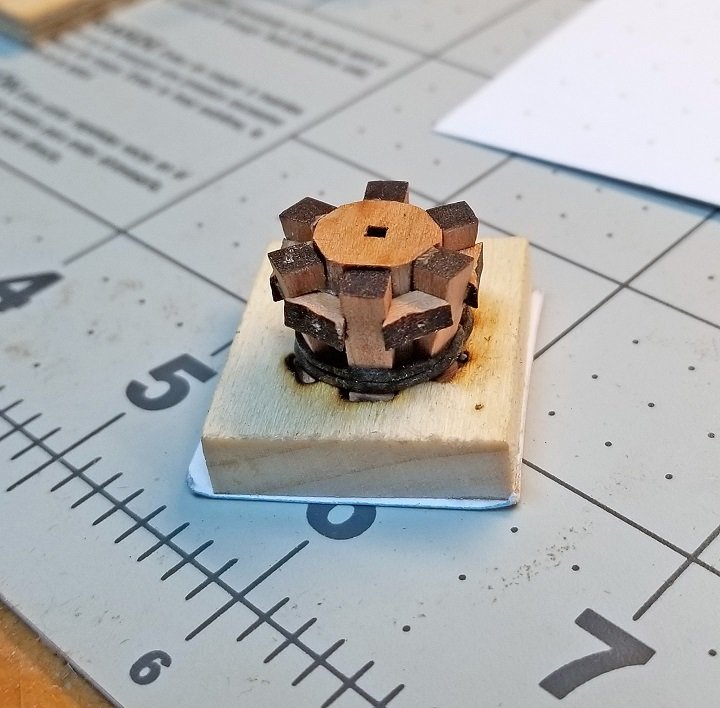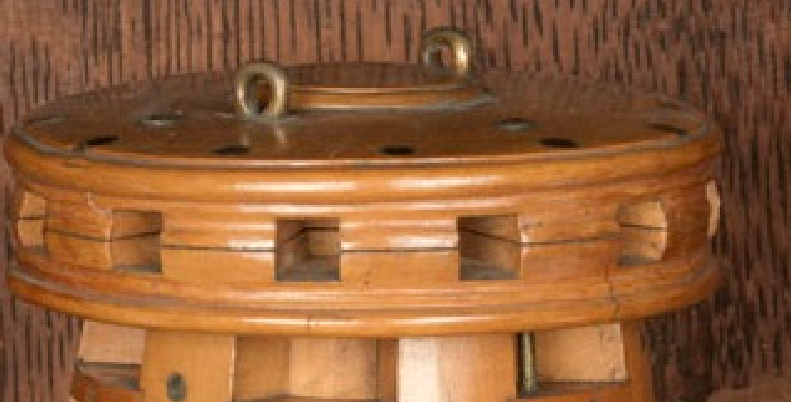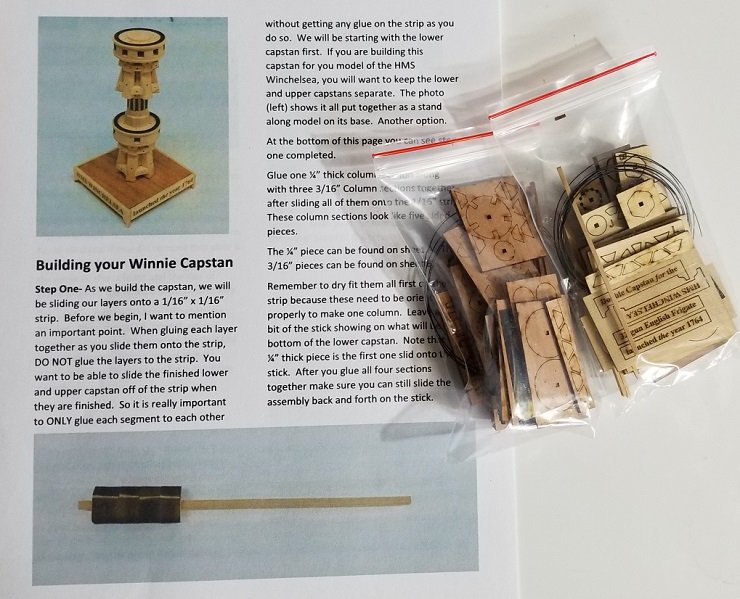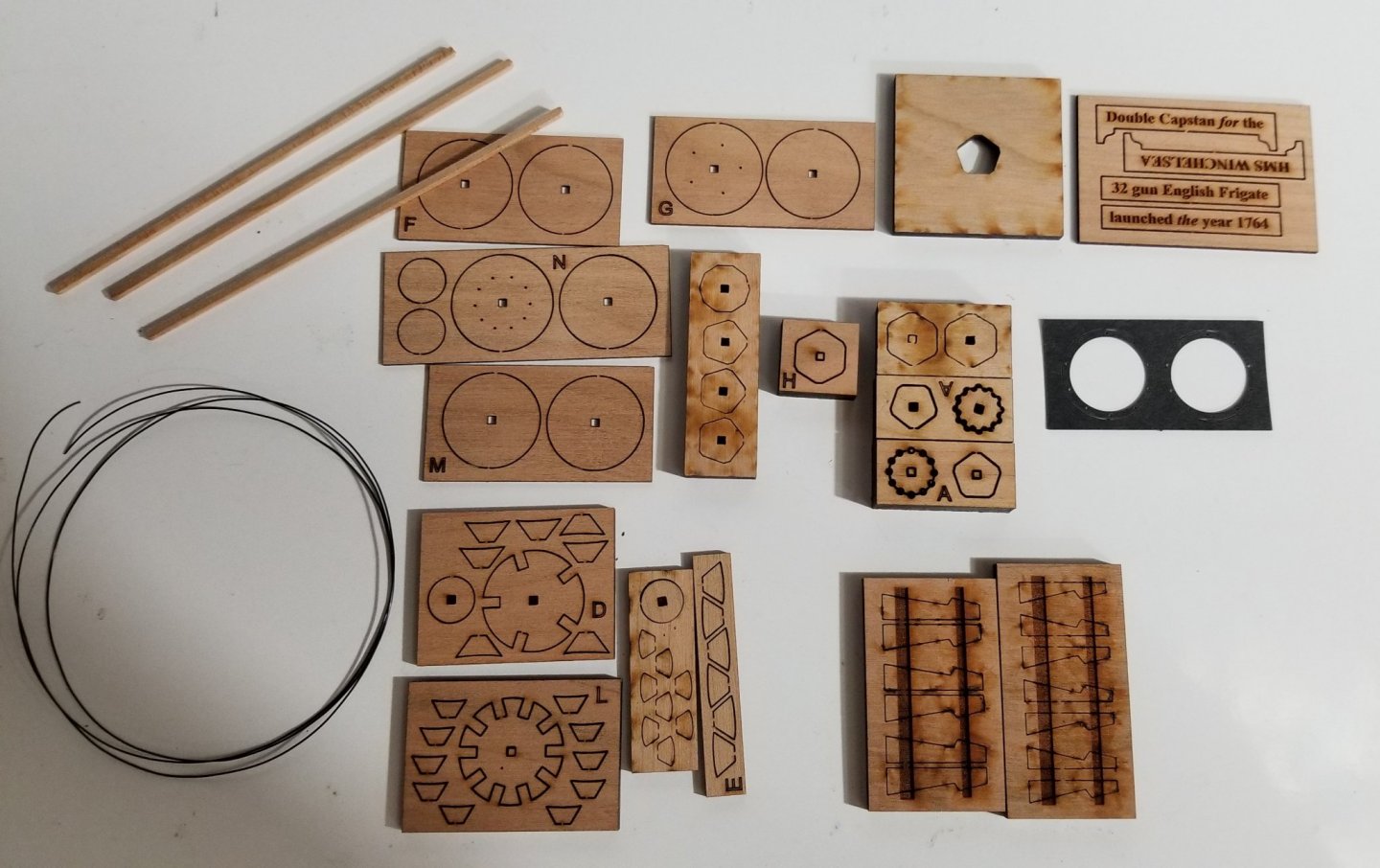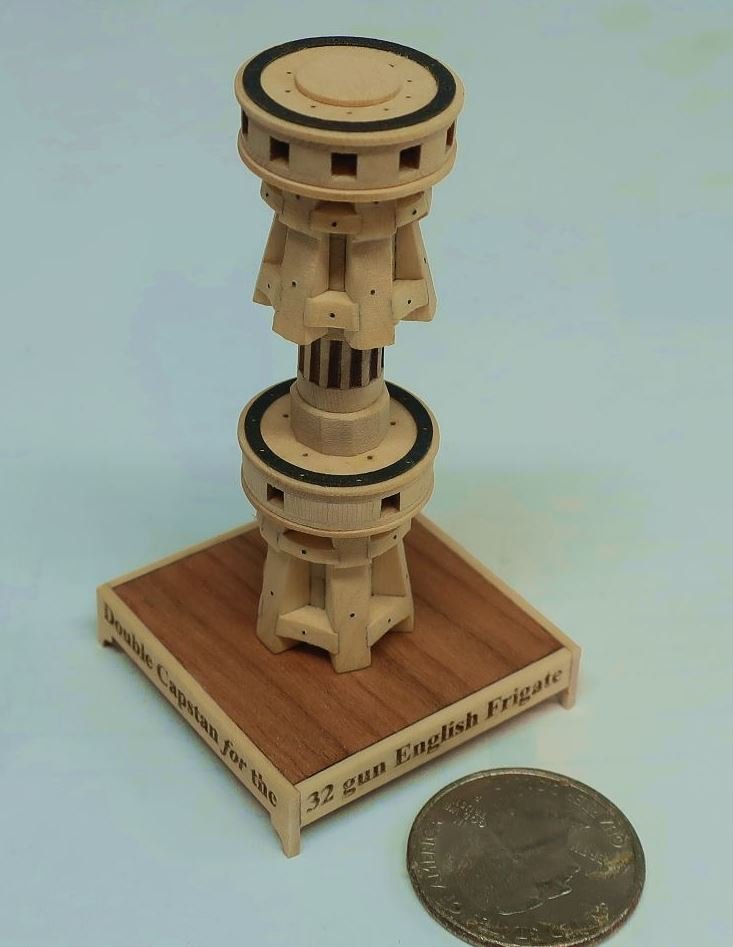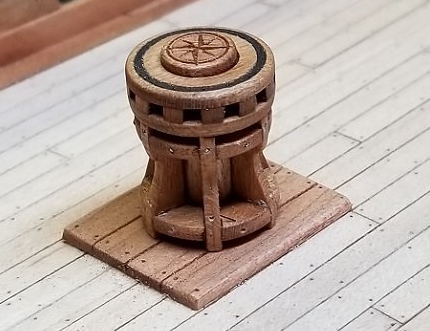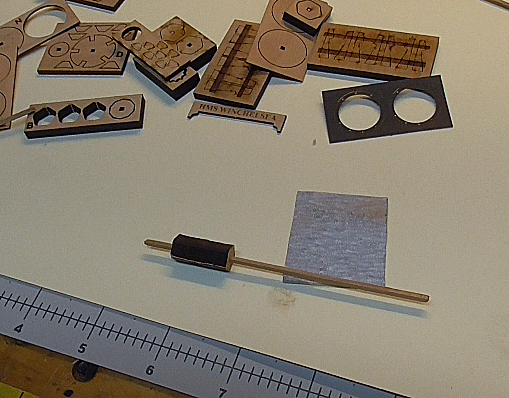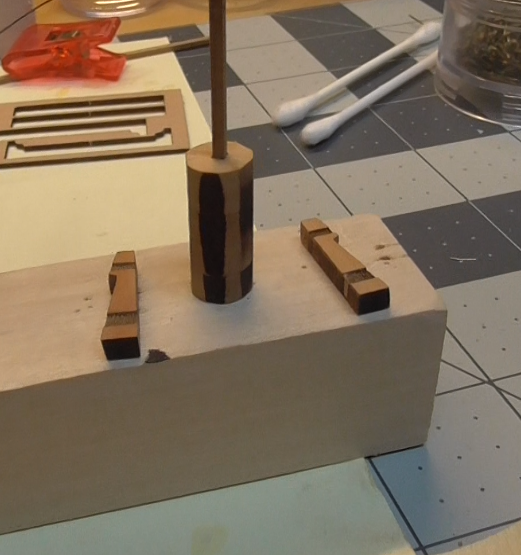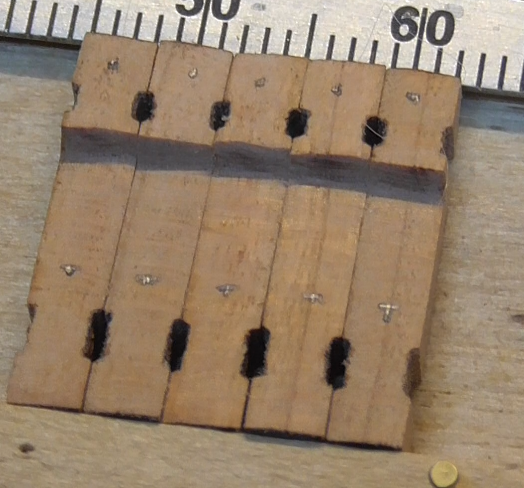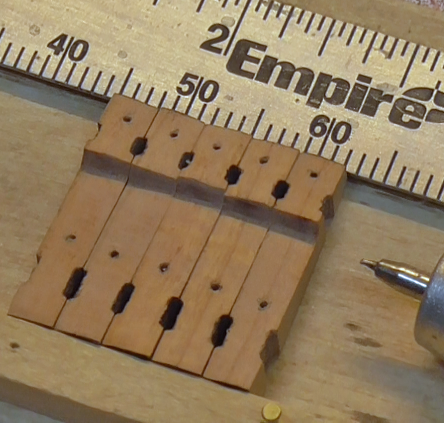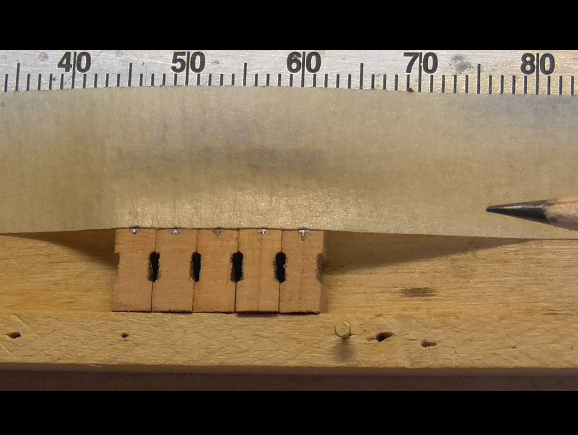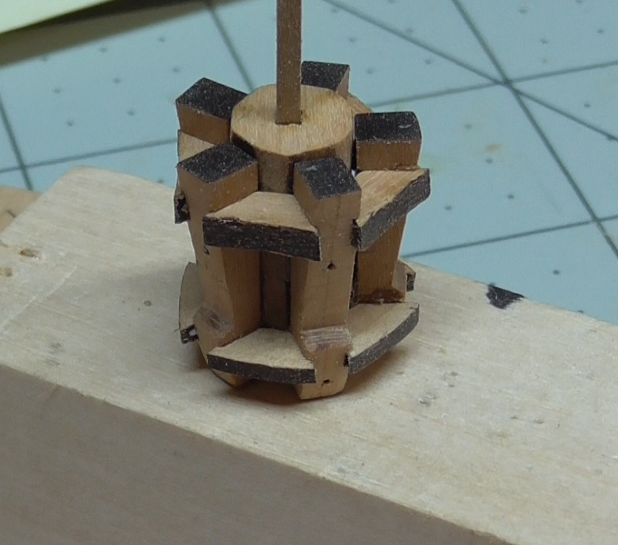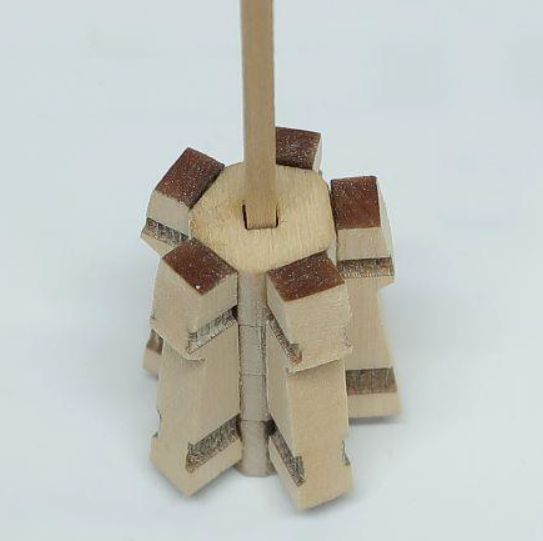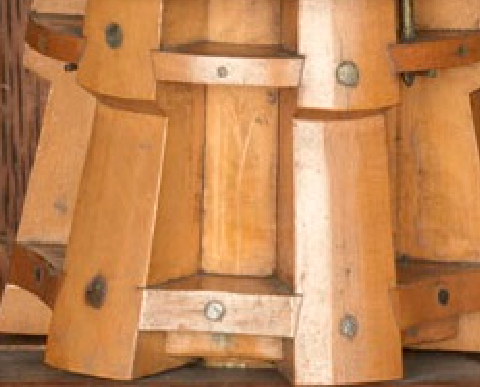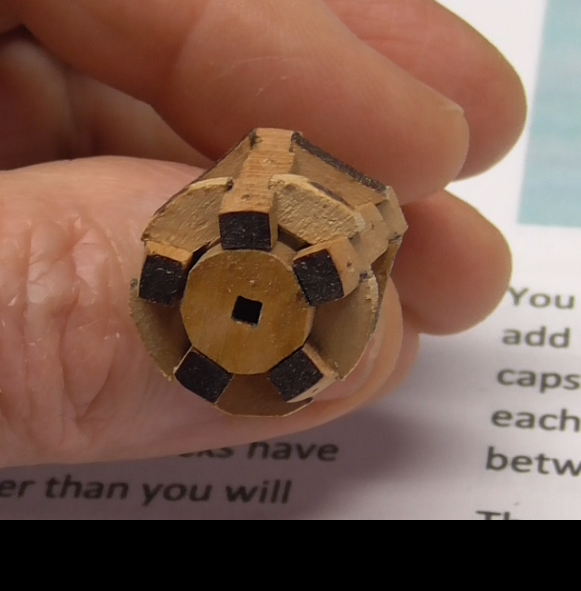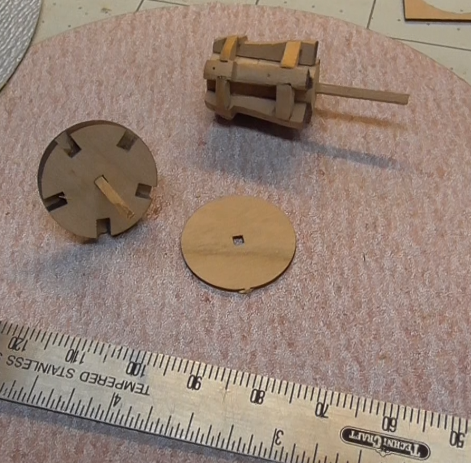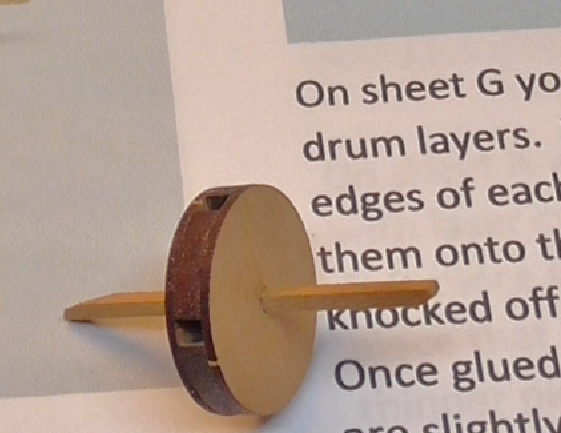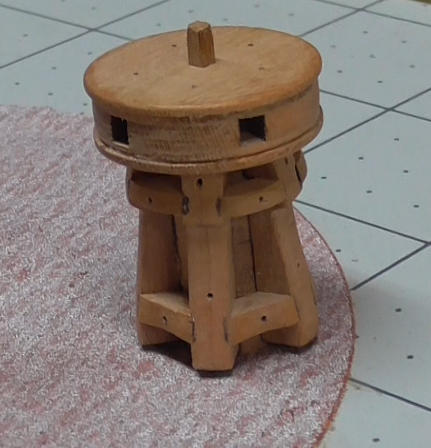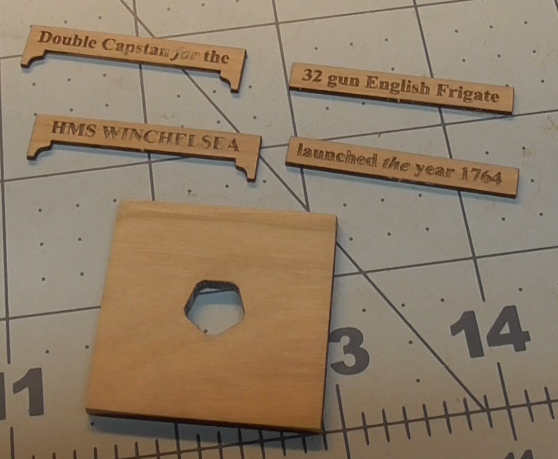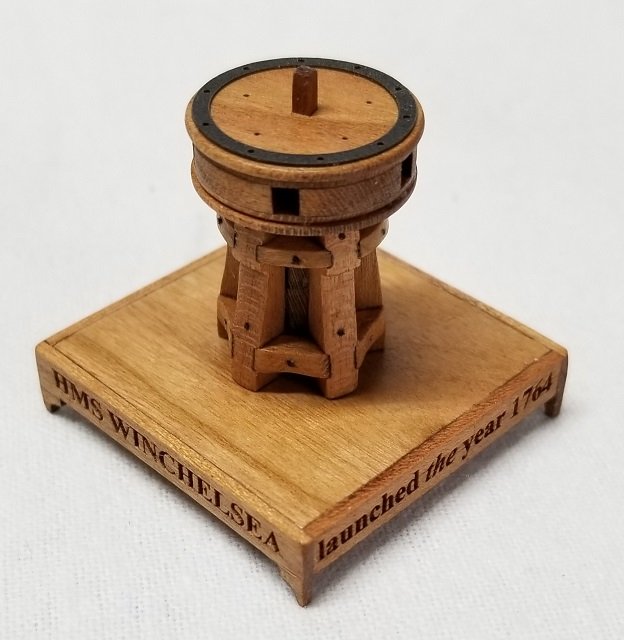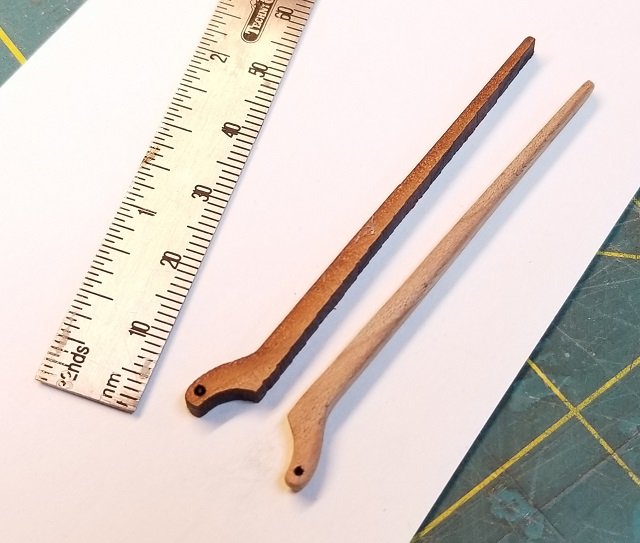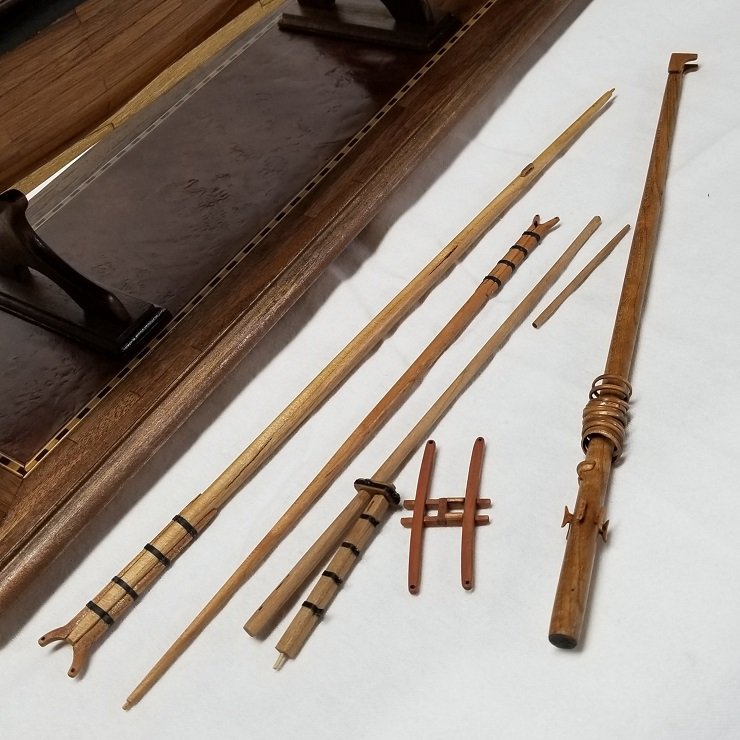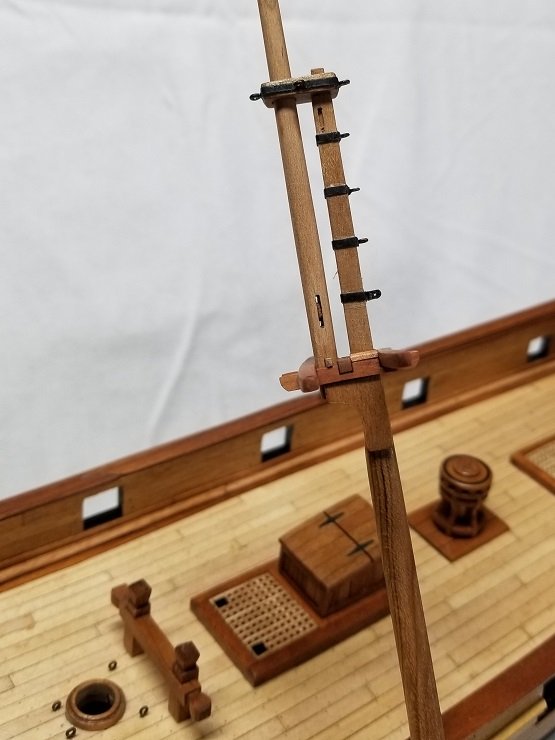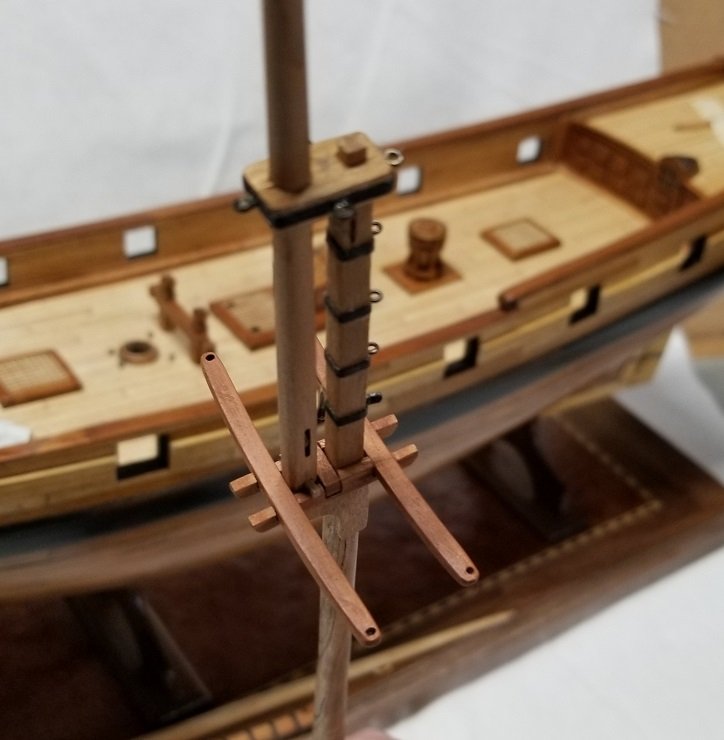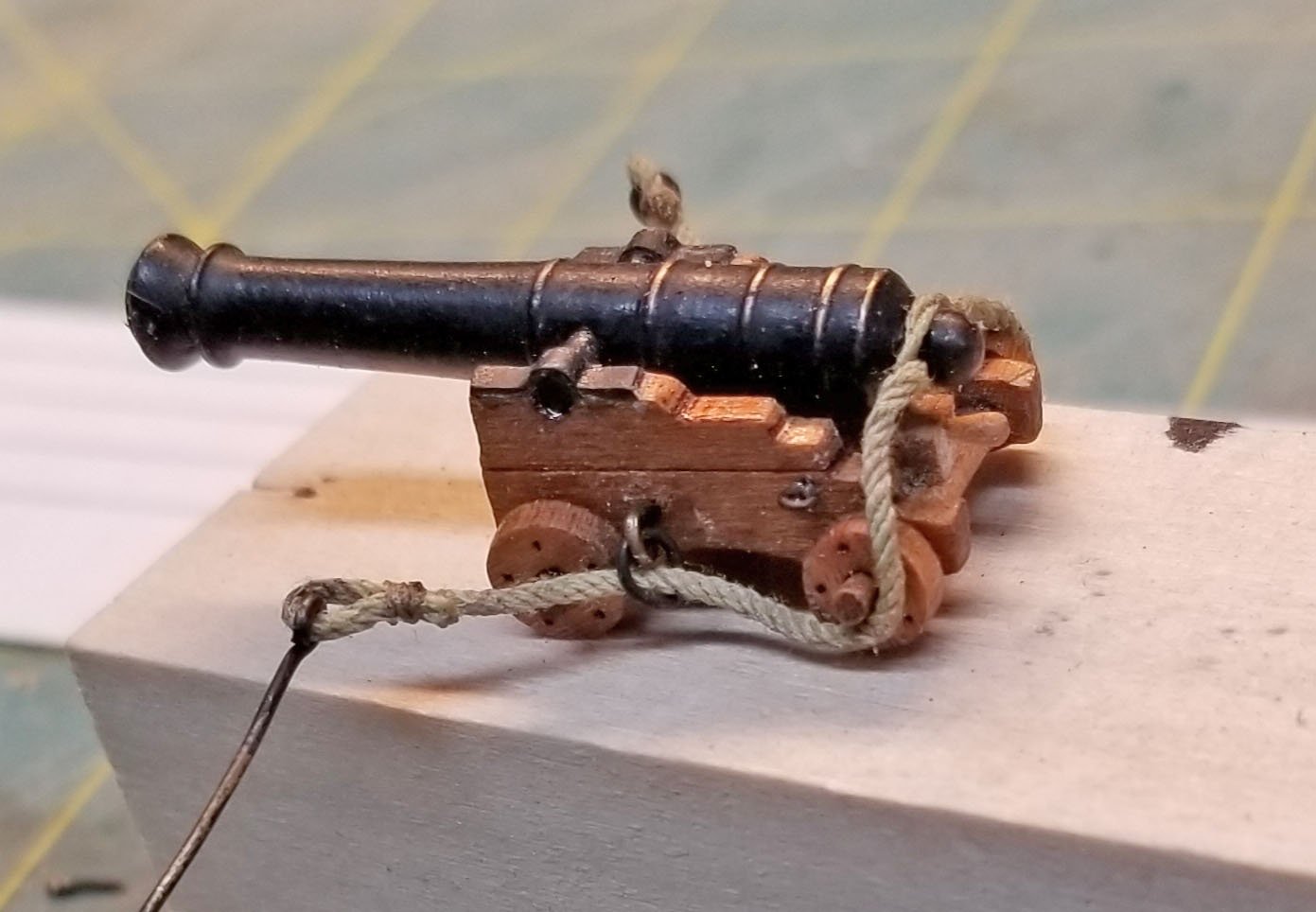-
Posts
2,717 -
Joined
-
Last visited
Content Type
Profiles
Forums
Gallery
Events
Everything posted by Gregory
-
-
I'm surprised you didn't get more any replies.. This must have slipped off the radar. There is an excellent topic regarding topsail schooner rigging. Here is the post that has some info regarding vangs.
-
James, what is the software you use for creating the manual? It looks very robust?
- 355 replies
-
- vanguard models
- Sphinx
-
(and 1 more)
Tagged with:
-
Mantua "blue painted" photo-etched brass
Gregory replied to Alexisgm97's topic in Metal Work, Soldering and Metal Fittings
It's only too abrasive when it's too abrasive... The grit on these start at 1500 and is used for polishing. Grit 1500 2000 2500 3000 5000 7000 High Precision Polishing Sanding Wet/dry Abrasive Sandpaper Sheets - Germany, Pack of 12 -
Bill97, Since your actual question is about color of 3rd party rope, I think you will find that dark brown is in favor for standing rigging, and a hemp color for running.. Since you are going to the expense and trouble of buying out of the box, look for quality that actually looks like miniature rope, and not just different sizes of string/cord.. Here is a post about one of our sponsors CraftySailor
-
Electric sanding belt file
Gregory replied to Don Case's topic in Modeling tools and Workshop Equipment
Craftsman still has the lifetime warranty on hand tools.. I don't know if it as easy to claim it as it used to be. I used to could take a 10 year old screwdriver with a chipped blade into a Sears store and swap it out, no questions asked. -
Electric sanding belt file
Gregory replied to Don Case's topic in Modeling tools and Workshop Equipment
Do you have a link for that? From the image, I cant tell if its a chain saw or an electric shotgun.. -
HM Cutter Alert 1777 by muratx - scale 1:48
Gregory replied to muratx's topic in - Build logs for subjects built 1751 - 1800
Very nice.. -
Could they have really skimped on the superstructure while spending more on the outside appearence?
-
Here is what Mondfeld shows for sails or no sails.. Also, some sails like sky sails and royals were " set flying ", so the yards were not present without sails.. I don't think this is a consideration with Bounty..
-
I want to say at this point that the key to success with this kit would be to take a lot more time than I did, to carefully finish the pieces, and check fit before gluing. They are so small, just a little heavy handedness with the sanding will throw everything way off. Chuck has included at least one extra of the whelps and chocks, so a little fo rgiveness is included in the kit. I did a little rough finishing on my unimat, My final sanding was with some stuff that I'm not sure what the grit is. At least a thousand.. It produced a nice polished look that I think looks pretty good. Here is the new head piece that I fabricated with my laser. ( the old one on the right) The holes are all proper now.. Here is the finished upper Capstan on the deck of my ship. A close up. The finish is some very thin poly. I really like the look of the cherry for my purposes. My workmanship does not do the kit justice, so I really look forward to see what some of the Winchelsea builders accomplish with this kit. If one follows the instructions precisely, you can't go wrong. I will be putting together the AYC version soon, but taking a lot more time and refining what I have learned with this quick build.
- 8 replies
-
- syren chuck
- winchelsea
-
(and 1 more)
Tagged with:
-
For the upper capstan, which is the part I plan on using, I made a jig to get a more even surface to fix the whelps. I just take a couple of strokes on the sand paper on each surface that will be visible after whelps and chocks are in place.. For the upper capstan I made a jig to help me hold the whelps in alignment while I glued them up with the chocks. This time I drilled the holes for the simulated bolts in the chocks before going forward with the assembly. Here the lower chocks are glued in, with finishing to follow. Here are some of the parts for the upper drum. I thought I was on a roll ( yes a drum roll ), but I did this before I had the discussion above with Chuck, about how those holes should line up.. Here is the condemned effort before I realized my mistake and proceeded to rip it apart. To be continued..
- 8 replies
-
- syren chuck
- winchelsea
-
(and 1 more)
Tagged with:
-
So, just empty holes without the arms? OK, then.. Opinion. Do you think some brass wire pins would be out of place in the iron ring? For contrast?
- 8 replies
-
- syren chuck
- winchelsea
-
(and 1 more)
Tagged with:
-
Good to know. I was thinking the holes represented bolts that would go between the square openings,, Not so? It seems to be the case on the model we were looking at..
- 8 replies
-
- syren chuck
- winchelsea
-
(and 1 more)
Tagged with:
-
I recently reviewed this kit over in the Reviews forum: 1:48 Double Capstan for HMS Winchelsea I discussed it with Chuck, and he felt this forum would be the best place to put my build log. First, a little background about why I am building this capstan even though I don't foresee building Winchelsea. Back in June of last year I posted an item about the capstan I built from scratch, for my Corel kit Resolution. I thought it was pretty decent and as good or better than a lot of kit provided or third party parts. ( I had actually upsized the 1:72 kit from Master Korabel ) I'm glad Chuck looked in on my log, because he pointed out how kits rarely get the relative size ( thickness ) of the various parts; whelps, chocks and etc. of a capstan correct, if even close. It requires several thicknesses of wood, and therefore drives up the cost of the kit/part.. He showed me a picture of this model: ...And I decided at that point, that my model would never launch with the sub-par capstan that had been delivered by the contractor. Fast forward six months and Chuck unveils the capstan mini-kit for the Winchelsea project. I knew right away that Chuck had saved me the trouble of designing my own new capstan. I waited a couple of weeks to order my kit/s so that the Winchelsea project participants would have first option to get their kits. The packaging is typical of Syren mini kits, and the detailed instructions are available for download at Syren. This is the Cherry version. It will fit in with my Resolution. I also ordered the Alaskan yellow cedar version for another project I have in mind. The kit has 7 different thicknesses of wood as well as some black monofilament and black laser board pieces for detailing. I recommend keeping the various parts in their sheets until called for in the instructions. Many are similar and i know I would be scrambling to find the right part if I had removed them all early on. The first step calls for building the central column of the lower capstan. The instruction are very precise in describing which parts are needed for each step and which sheet to find them on. Example: Glue one ¼” thick column section along with three 3/16” Column sections together after sliding all of them onto the 1/16” strip. These column sections look like five sided pieces. The ¼” piece can be found on sheet A. The 3/16” pieces can be found on sheet B. There are relatively few steps, covered in eight pages of instructions, but each step involves several pieces. The next step calls for putting the lower whelps on the center column. Each step has information about when and how char should be removed. Naturally we want it removed from surfaces that will be visible after assembly. The lower column has five flat surfaces to receive the whelps, and there will be a small visible strip between each whelp. I over-did the char removal a bit here and paid for it later. The cherry has some dark streaks that can be a little confusing when removing char, so I would keep this in mind throughout a cherry build. Also, the AYC may be a little less forgiving when it comes to sanding, so a little extra care may be required there. Looking ahead, I chose to drill the holes for the simulated bolts before assembly. This is an image from the instructions. It calls for gluing the whelps on to the column in preparation for adding the chocks. I ran into some problems here, because I think I over-sanded the column, and did not get a tight, even spacing of the whelps. So I added the chocks at this point to help me align things before the glue ( PVA) set, and did the best I could to even things up. I had intended to drill the detail holes in the chocks before assembly, but my botched efforts got in the way.. You can see some gaps at this point, but I managed to recover somewhat, and I think you will see the final result with the lower capstan doesn't look too bad. I don't plan on using the lower part, so I am depending on it more for a learning process. At this point, I want to elaborate on those grooves for the chocks in the whelps . Looking back at the model I posted earlier. Note the chocks in the grooves. You will find those grooves in some plan drawings from the NMM. Structurally, they make sense. You won't find those grooves on any other kit model of a capstan. ( that I am aware of ) When Chuck chose to include those grooves in this kit he took laser part making to another level. It created a lot of additional work in cutting the parts. The grooves had to be etched precisely on both sides of the sheet, unlike cutting, or engraving on one side. The piece would have to be flipped and placed with pixel level preciseness to make this happen. Probably, once he had it all planned he created a jig that enabled him to more easily repeat the process, but getting there would have taken many hours and lots of scrap.. When all is said and done, those grooves really contribute to a realistic and more precise build. I ended up with some ugly gaps, but I hope to show I overcame them to some extent later. Just something for other builders to keep in mind. Next is building the drum for the lower capstan. Really an easy process of making a sandwich of three parts. Char cleaned off and added to the assembly.. I won't go over the detail of putting the base together. It is really straight forward. The biggest challenge is getting the words in the right order.. A little polly to bring out the cherry, and here is my version of the lower capstan. I have continued working on the upper part, which i plan to use for my Resolution, and should have it completed shortly.. I hope to be able to show a little improvement with my lessons learned..
- 8 replies
-
- syren chuck
- winchelsea
-
(and 1 more)
Tagged with:
-
I commented in the other saw thread about the blade options for Proxxon.
-
I'm happy with the Proxxon FET, that Hyuda looks like it would be worth a try.. Better than doing without if you can't spring for Byrnes at this point.
-
which table saw to get??
Gregory replied to kronvold's topic in Modeling tools and Workshop Equipment
I bought mine from Amazon a few months ago. I'm not sure about the version. I'll see if I can find a date stamp on it. The plastic parts are all quite robust and don't appear in danger of failing any time soon. I find the fence to be very accurate and capable of very fine ( micrometer-like ) adjustments. I believe the arbor is 10mm, but you can use this 1/2" arbor adapter from MicroMark and use the excellent blades available from Malco Saw. No doubt the Byrnes saw is the Rolex of small saws, but I find the Proxxon to be very capable. -
I feel fortunate that I am able to be the first to show off this beautiful little kit from Chuck and the Syren Ship Model Company I know quite a few Winchelsea builders already have this, because I had to stand in line for a couple of weeks to get mine. Here is the no frills packaging ( I ordered one each of the cherry and Alaskan yellow cedar versions ) next to the comprehensive assembly instructions, available for download at Syren. Winnie Capstan Instructions Here is the cherry version spread out. The wood is as high quality as I have ever seen. It reminds me of pear, in that there is very little noticeable grain. However, having worked with a lot of cherry lately, I look forward to the color I know will pop out with a very light finish. Chuck has provided five different thicknesses of material, from 1/32" to 1/4". The attention to detail is what you have come to expect from Chuck and Syren, with the included black monofilament to simulate bolts and the black laser board ring detail. There is just nothing else out there, kit or molded, to compare to the realistic look of this kit. Sure, we might see a 3D printed one any day now, if they are not already out there, but they will not be wood, and we will know it.. I can't imagine how Chuck found the time to design this and bring it to production. He never sleeps. At $23.00 it is a steal.. It will be a great addition to any 1:48 project, and in an historically accurate way. The design and look of these things did not change much over a 100+ year period. I don't have any plans to build the Winchelsea, but I have a couple of projects in mind where this kit will fit right in. The quality and completeness of the kit is fairly self explanatory, so I don't know what else I can say at this time. Please hit me with any questions you have. I plan on putting it together in the next few days and will create a build log to document the experience. I hope I can get close to the bar Chuck has raised.
- 4 replies
-
- capstan
- winchelsea
-
(and 3 more)
Tagged with:
-
which table saw to get??
Gregory replied to kronvold's topic in Modeling tools and Workshop Equipment
I am very pleased with the Proxxon FET. I have made a lot of strips as thin as .5 mm from a variety of wood. I particularly like the very precise fence adjustments. The tilting feature is also great to have. If you decide to get it, you may want to explore getting some finer blades than those Proxxon provides. -
There are various cure times depending on available moisture and the formula of the glue itself. Often it can be instantaneous. Acetone dissolves cured CA, and can be used to clean up unwanted residue, and when approached proberly, to break a cured bond. Of course acetone will also dissolve most varnish and paint, so you may have to do some refinishing if it ends up in spots you don't want.
-
Here are my boom jaws.. Fresh from the laser on the left, and finished up on the right.. I have the mast and topmast broken into smaller parts that make it easier to shape the pieces, rather than try to shape one long part. It also makes it easier to make a new part if something goes wrong. it should look something like this eventually.. Still working on cannon. This breaching rope looks frayed because I did a lot of twisting and untwisting. I hope to come up with a cleaner look.. Stay tuned..
About us
Modelshipworld - Advancing Ship Modeling through Research
SSL Secured
Your security is important for us so this Website is SSL-Secured
NRG Mailing Address
Nautical Research Guild
237 South Lincoln Street
Westmont IL, 60559-1917
Model Ship World ® and the MSW logo are Registered Trademarks, and belong to the Nautical Research Guild (United States Patent and Trademark Office: No. 6,929,264 & No. 6,929,274, registered Dec. 20, 2022)
Helpful Links
About the NRG
If you enjoy building ship models that are historically accurate as well as beautiful, then The Nautical Research Guild (NRG) is just right for you.
The Guild is a non-profit educational organization whose mission is to “Advance Ship Modeling Through Research”. We provide support to our members in their efforts to raise the quality of their model ships.
The Nautical Research Guild has published our world-renowned quarterly magazine, The Nautical Research Journal, since 1955. The pages of the Journal are full of articles by accomplished ship modelers who show you how they create those exquisite details on their models, and by maritime historians who show you the correct details to build. The Journal is available in both print and digital editions. Go to the NRG web site (www.thenrg.org) to download a complimentary digital copy of the Journal. The NRG also publishes plan sets, books and compilations of back issues of the Journal and the former Ships in Scale and Model Ship Builder magazines.

